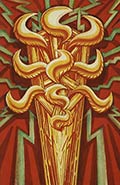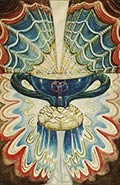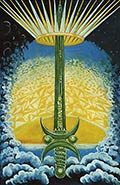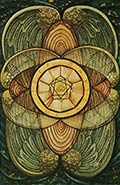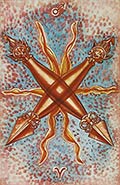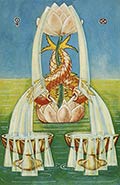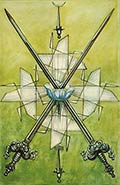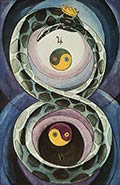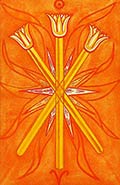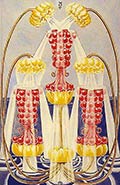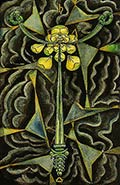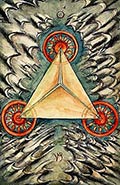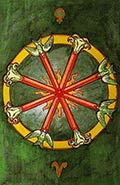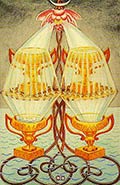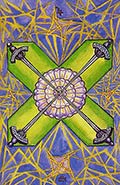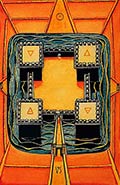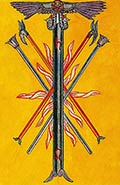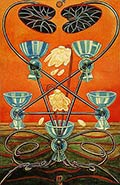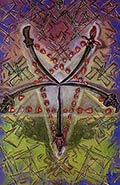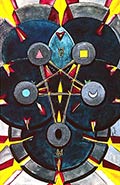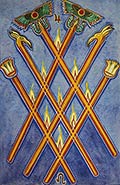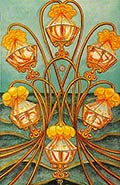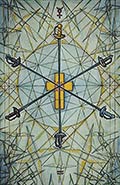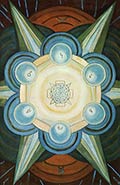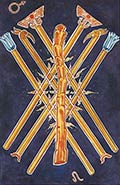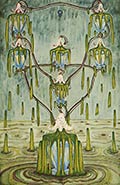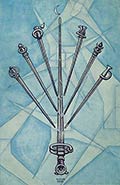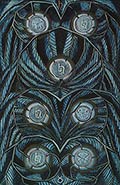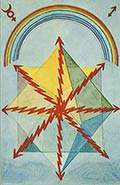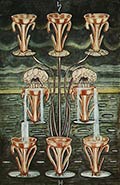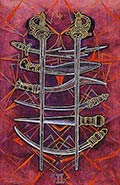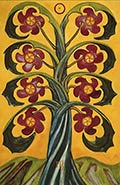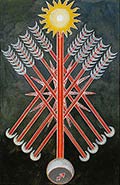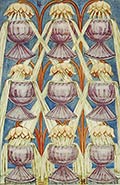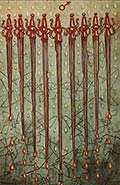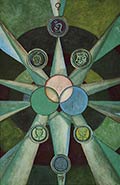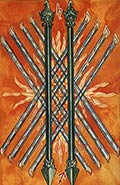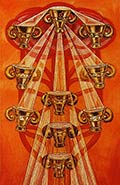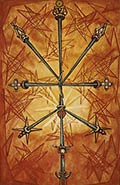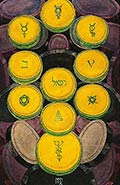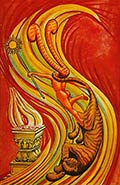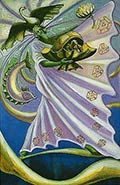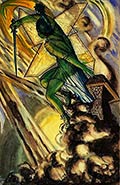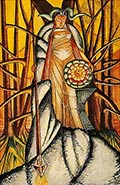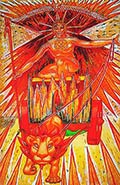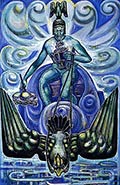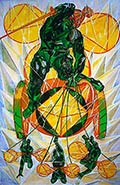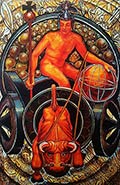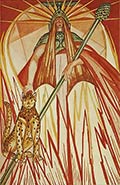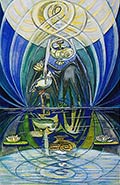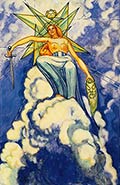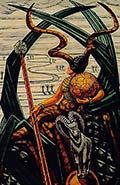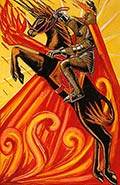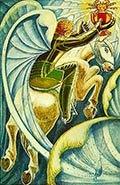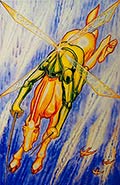Introduction to the Tarot Cards
The Tarot is a 78 card deck containing archetypes and hidden wisdom. Also known as trionfi, tarocchi, and tarock, tarot cards can be used in readings which provide inroads to the understanding of unconscious processes. Using a spread, the cards paint a story for the reader to think about.
The different layouts that are used in readings have been developed to answer all kinds of questions. The symbolism in each of the card meanings represents spiritual energies that can be likened to the things that are happening in one’s real life. Tarot spreads can reveal hidden factors about something that one seeks awareness of. Certain spreads can be extremely helpful when someone is faced with tough decisions.
To begin, a reader should be relaxed and in a receptive state, avoiding an analytical frame of mind. Meditation, ritual, or prayer can help in achieving this. Messages may be irrational, as in interpreting dream imagery.
As a gateway to spiritual wisdom, tarot cards should be considered sacred, like an altar. Spiritual messages from a reading can change a person’s life. A more profound experience can leave readers awe-struck.
With determination, an open-minded individual can learn the basics and intuitively become a good reader in no time. The magic is in the cards. And interpreting esoteric symbolism is a talent as innate and widespread as dream interpretation.
A fairly quick way to pick up tarot card meanings would be to draw a daily card and take notes over a period of time. Just pay attention to how each card appears to match up to events in everyday life.
Please remember that occult symbolism should not be regarded as positive or negative. ‘Negative’ cards may not seem pleasant, but they should be seen as positive, considering the warnings they can offer. Like interpreting dreams, nightmares can warn people when they really need to start paying attention to something they have been overlooking. It offers a chance to look at the situation differently and adapt. As a tool of alchemy, the tarot is about discovery, adaptation, and self-improvement.
Roots and Compatibility
Like horoscopes, tarot is compatible with different religions and spiritual paths because its role is to enhance the connection with the spiritual centre. The cards act as a mirror that reflects one’s innermost intentions.
Though the trionfi deck may have historical roots as a Medieval card game, the occult symbolism contained in tarot cards is difficult to dismiss as coincidental. The Major Arcana have been likened to everything from tribal gods to human archetypes to the various stages of personal/spiritual development. Some mystics have suggested the tarot is of Egyptian origin. Others have even proposed that the archetypal symbolism found in the cards was derived from ET technology that originated long ago on Venus. Maybe it’s simply that the symbolism of archetypes is ingrained into our collective consciousness, making this kind of tool an inevitable outgrowth of human culture. The tarot deck has been adapted to incorporate everything from the Kabbala to the Periodic Table of Elements. The beauty of reading esoteric symbolism is that it does not really matter which system one believes in or chooses to follow. It is a deeply personal experience.
Deck Structure
The Major Arcana suit consists of archetypal images that represent major themes in life. When trump cards appear, they can be interpreted like a stressed syllable or a word in italics. When interpreting cards of the trump suit, you may want to pause and reflect longer than ordinary. Majors can also represent life changes.
The Minor Arcana section represents the more mundane, commonplace happenings in life. These cards act as the body of the deck, divided into four suits. Likewise, each suit could be compared to a body system. To extend the metaphor, the nervous system could be thought of as the Swords, the circulatory system Cups, the endocrine Wands, and the Pentacles would be the muscular/skeletal/skin. The suits overlay each other, interacting together the same way as body systems do. Each suit is further divided into two sections known as court and pip (or in many modern decks, scene) cards.
Courts are the 4 cards traditionally depicting the royal characters of King, Queen, Knight, and Page – or sometimes Knight, Queen, Prince, and Princess; or similar variations. This section of the deck is sometimes seen as the section that represents actual people in or entering a person’s life. Pip cards were traditionally depicted as numbered collections of suit items, but ever since the Rider-Waite deck, most modern decks now show depictions of certain scenarios of events and themes in life.
Each section and each card of the tarot deck plays its role in the function of the deck as a collective body. Like the working engine that a living organism represents, the whole is greater than the sum of its parts.
- Major Arcana: the greater secrets – trumps carry more weight than the other four suits
- Minor Arcana: the lesser secrets – divided into four suits of elemental states
- Wands (Fire) – energy, motivation, action, force, conflict, the will
- Cups (Water) – emotions, feeling, the language of spirit, the subconscious
- Swords (Air) – Ideas, communication, thoughts, enlightenment, concepts
- Pentacles (Earth) – Manifestation, physical reality, the mundane and the carnal
Major Arcana
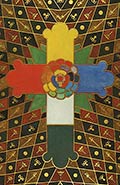
| 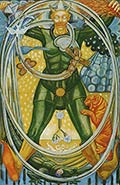
| 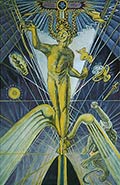
| 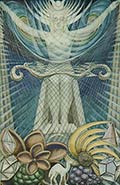
| 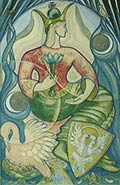
| 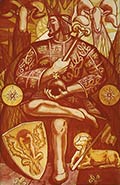
|
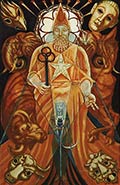 |
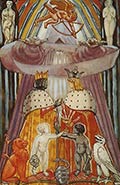 |
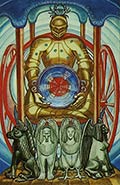 |
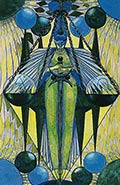 |
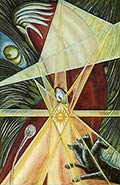 |
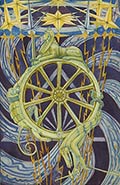 |
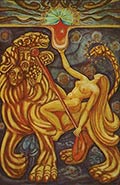 |
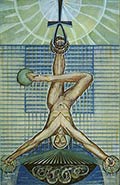 |
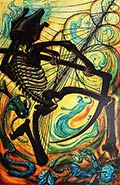 |
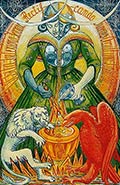 |
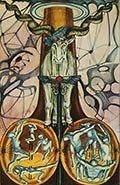 |
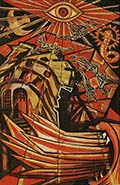 |
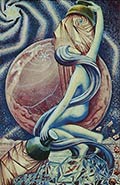 |
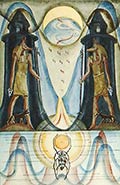 |
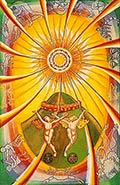 |
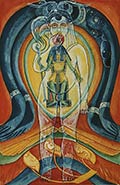 |
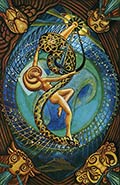 |
 |
Minor Arcana Number Cards
| W | C | S | P | ||
Ace |
|||||
2 |
|||||
3 |
|||||
4 |
|||||
5 |
|||||
6 |
|||||
7 |
|||||
8 |
|||||
9 |
|||||
10 |
Minor Arcana Court Cards
| W | C | S | D | ||
| Princess (Page) | |||||
| Prince (Knight) | |||||
| Queen | |||||
| Knight (King) | |||||
Click the images below to learn about each tarot deck.
| Surrealist | Diary | bifrost |
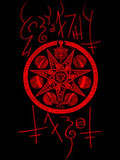 | 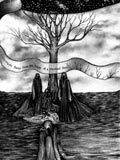 | 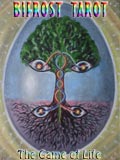 |
| by Ari Bach | by Ash Abdullah | by Jeremy Lampkin |
| Langustl | Crowley-Thoth | Rider-Waite |
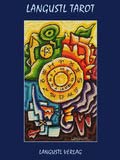 | 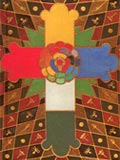 | 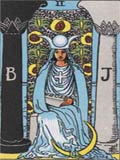 |
| by Stephan Lange | by Crowley & Harris | by Waite & Smith |
Discover other methods of cartomancy in the forms of Madam Lenormand and playing cards.

